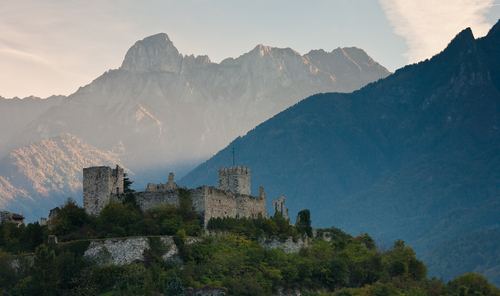Demonym(s) Biennesi Area 30 km² Postal code 25040 Dialling code 0364 | Elevation 445 m (1,460 ft) Time zone CET (UTC+1) Local time Wednesday 12:26 PM | |
 | ||
Weather 12°C, Wind NE at 8 km/h, 36% Humidity Points of interest Museo etnografico del ferro, Palazzo Francesconi Rabajoli, Torre Mendeni | ||
Bienno is an Italian comune in Val Camonica, province of Brescia, Lombardy, classed as one of the five most beautiful villages of Italy by the Council of Tourism of the Association of Italian Municipalities (ANCI).
Contents
- Map of 25040 Bienno Province of Brescia Italy
- Geography
- History
- Main sights
- Religious architecture
- And also
- Traditions and folklore
- Events
- film
- People
- References
Map of 25040 Bienno, Province of Brescia, Italy
Geography
The village is located in Val Grigna, on the northern side of the river Grigna. It is bordered by other towns such as: Bagolino, Berzo Inferiore, Bovegno, Breno, Cividate Camuno, Collio, Prestine.
History
In 1295 a dispute occurred with the neighbouring village Bovegno regarding some high pastures.
On January 25, 1350 the bishop of Brescia invested iure feuds for a tenth of the rights in the territories of the Municipality of Bienno (vicinia) and men of Bienno. This also happened back in 1295, 1336, and later in 1388, 1423 and 1486.
In 1391 the land of Bienno, which sided with the Ghibellines, was the site of extensive cattle raiding by the Guelph Camuni, led by Baroncino Nobili of Lozio.
The peace of Breno was signed on 31 December 1397 by the representative of the community of Bienno, Lanini Bertolino di Martino, who was a Ghibelline.
Between 1805 and 1815 the town of Bienno was united to Prestine and called "Bienno with Prestine."
Main sights
Bienno is part of the club of "The Most Beautiful Villages in Italy" creation of the Council of Tourism of the Association of Italian Municipalities (ANCI).
Religious architecture
And also
when she left, after a fatal hunting accident caused by her husband, Count Jean Charles Tristan de Montholon, son of Charles Tristan, marquis de Montholon, suspected to have poisoned the Emperor Napoleon, in Saint Helena, and brother of Hélène Napoleone Bonaparte de Montholon , whose father could be Napoleon and who lived 90 years,
with the exception of the usufruct of the lower floors, left to Liberata Fostinelli and Battista Panteghini and all their descendants ad vitam eternam , to reward them from their loyalty.
This usufruct has been transferred to the municipality of Bienno by their children Battista Panteghini, son of Liberata, and Maria Bettoni, whose family was the owner of the Palazzo Bettoni in Bienno, in 1988, because of the difficulties of maintenance and heating the palace, and their old age. It becomes the Public Library and a cultural center.
Traditions and folklore
The scütüm are in camunian dialect nicknames, sometimes personal, elsewhere showing the characteristic features of a community. The one which characterize the people of Bienno is Padèle.
Events
All buildings, museums and churches are open to the public every year, for a week, until midnight in August, during the village festival called Mostra Mercato former flour mill and forge are returned to service. This week welcomes thousands of visitors.
film
Mostra mercato 2014
